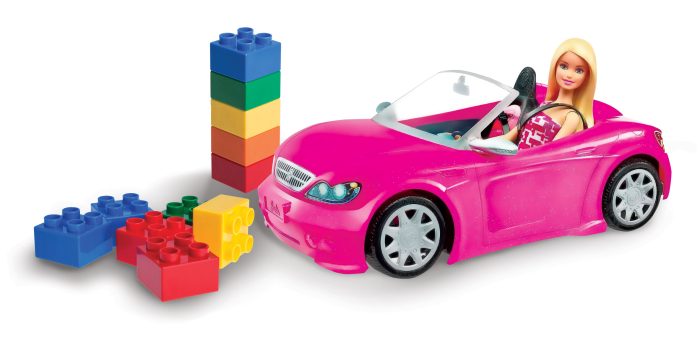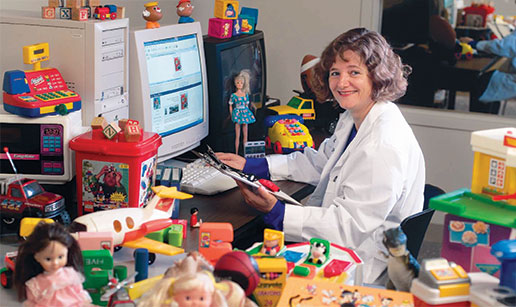Rethinking an American Icon

Posted on November 21, 2023
Research examines the impact of gendered toys on career choices
These days, there’s no way not to think pink.
The Barbie movie has sparked a major comeback for the 64-year old blonde, blue-eyed, pink-clad icon. Love her or hate her, there’s no getting around Barbie’s influence on pop culture.
And believe it or not, you might be able to find a Barbie or two tucked away in the office of Mount Mary’s president.
That’s because President Isabelle Cherney is a Barbie expert of sorts. Dr. Cherney spent many years studying the influence of gendered toys on children’s development, and was even part of an Obama White House conference the subject.

“Toys are so important. Kids spend so much time with them, and the brain will rewire itself based on those experiences.”
Dr. Isabelle Cherney, President of Mount Mary University
As a doctoral candidate in psychology at the University of Nebraska, Cherney created a fascinating research project involving more than 100 children between the ages of 18 months to four years. In 40-minute sessions, she gave children the opportunity to play with 60 different toys – each selected as being considered predominately male (such as a firetruck), predominately female (such as a doll) or neutral (such as crayons). Cherney recorded and observed the children’s behavior, noting which toys were played with and the complexity of the play with each.
“We found that certain toys elicited higher cognitive sequencing. Girls playing with a doll, for example, will lead to more sequential interaction. They will cook the food, feed the doll, change the doll’s clothing, give the doll a bath,” said Cherney.
“The boys, on the other hand, had less sequencing with their chosen toys. They would take a truck and smash it, for example. But the boys often used more imagination. The boys would use a toy differently than its intended use. It was more open-ended.”
Her study and many subsequent studies concluded that girls seem to be better at fine-motor skills and their play involved more communication, ‘playing pretend’ and sequencing activities. Boys, on the other hand, tended to use more imaginative and spatial play. The ways in which children play with toys often translates into career and vocational choices as adults.
“We see fewer women than men going into STEM (Science, Technology, Engineering, Math) fields, and this early developmental process of play could be part of the reason behind that,” Cherney said.
She suggests that boys and girls should be given the opportunity to explore all types of toys – even those typically associated with the opposite gender.
“Toys that are creative, inquisitive and don’t look they are only for one sex allow children to explore and not be bound by stereotypes.”
And what does that mean for our iconic pink-clad plastic fashionista?
“I think Barbie can be reimagined. If there could be a Barbie that children could use as a robot or that they could code to do things, to make her say something, or programmed to play with them, that would make them more educational. Barbie comes with clothes, but what if it came with fabric and the child could create a dress for it? This would open the toy up for more exploration and imagination,” Cherney speculates.
“I think it’s a toy that can still evolve,” she adds. “It hasn’t reached its full potential.”



